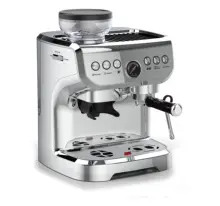A negative ion generator is a device that releases negative ions into the surrounding environment. Negative ions are molecules or atoms that have gained an extra electron, resulting in a negative charge. These negative ion devices are designed to improve the air quality by increasing the concentration of negative ions in the air.
Negative ionisers work by using various methods to produce negative ions, such as corona discharge, photoelectric effect, or natural processes like waterfalls and lightning. When negative ions are released into the air, they attach themselves to airborne particles, such as dust, pollen, and other allergens, causing them to become heavier. As a result, these particles either fall to the ground or get trapped in filters, reducing their presence in the air and improving the overall air quality.
Types of negative ion generators
There are several types of negative ion generators available in the market, each with its own unique characteristics and methods of ion generation. Negative ion generator air purifiers use electricity to create negative ions. The process involves ionizing the air molecules by applying a high voltage to a series of electrically charged plates or needles. The ions are then released into the air, where they attach to airborne particles, making them heavier and causing them to settle down or get trapped in the purifier’s filter. Salt lamps are another type of negative ion generator. They consist of a block of salt, often Himalayan salt, with a light bulb inside. When the lamp is turned on, the heat from the bulb causes the salt to release negative ions into the air. While the ionizing effect of salt lamps is relatively low compared to other generators, they are popular for their aesthetic appeal and the warm, soothing glow they emit.
Advantages of negative ion generators
Negative ion generators offer several potential benefits. By increasing the concentration of negative ions in the air, negative ionizers can help remove airborne pollutants such as dust, pollen, pet dander, and smoke particles. The attached negative ions make these particles heavier, causing them to either get trapped in filters or fall to the ground, resulting in cleaner air. Negative ions enhance the body’s oxygen absorption and utilization, which can result in increased energy levels. Additionally, negative ions are thought to promote better sleep by creating a calm and relaxing environment. They may also help regulate serotonin levels, a neurotransmitter involved in sleep regulation.












































 浙公网安备 33010002000092号
浙公网安备 33010002000092号 浙B2-20120091-4
浙B2-20120091-4